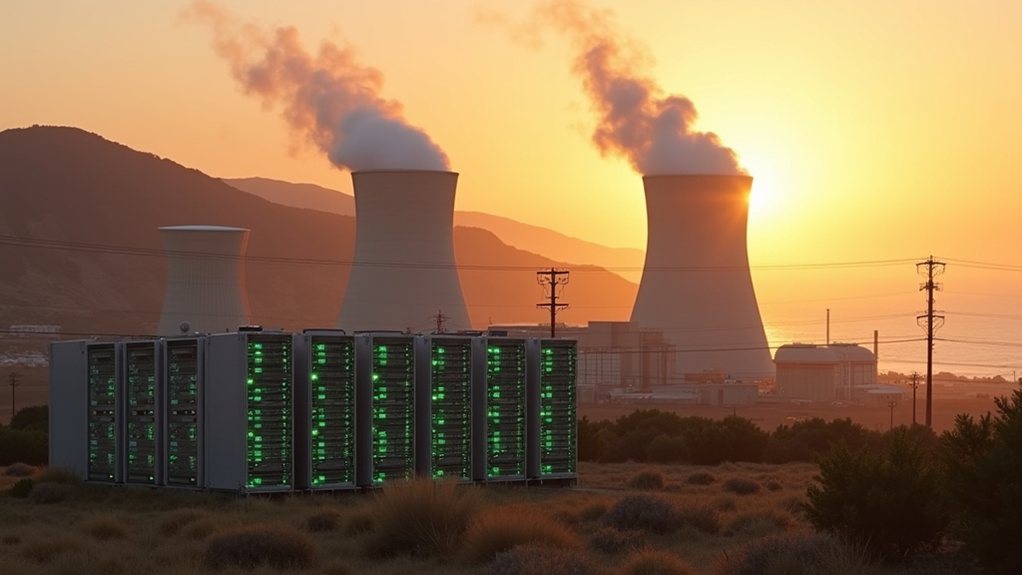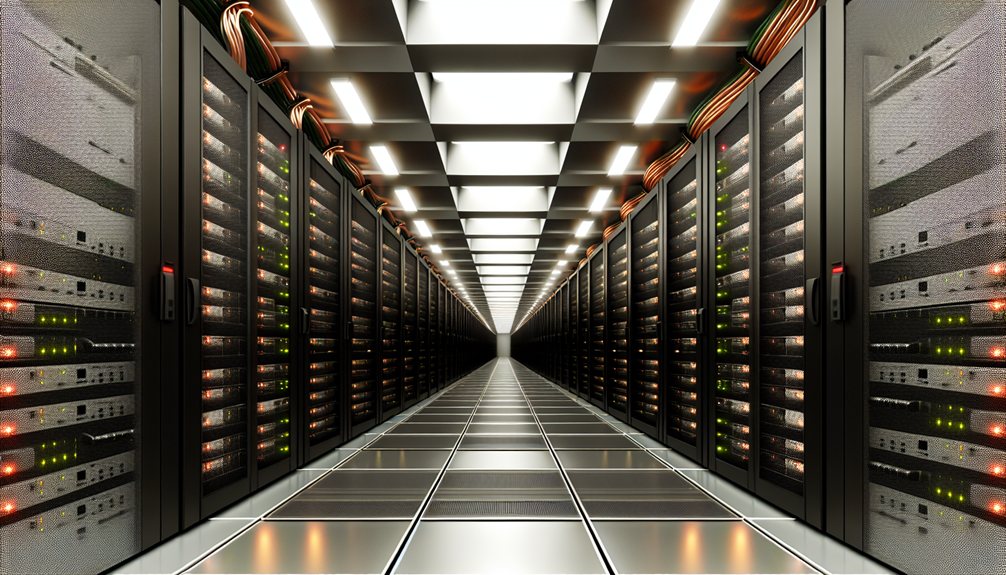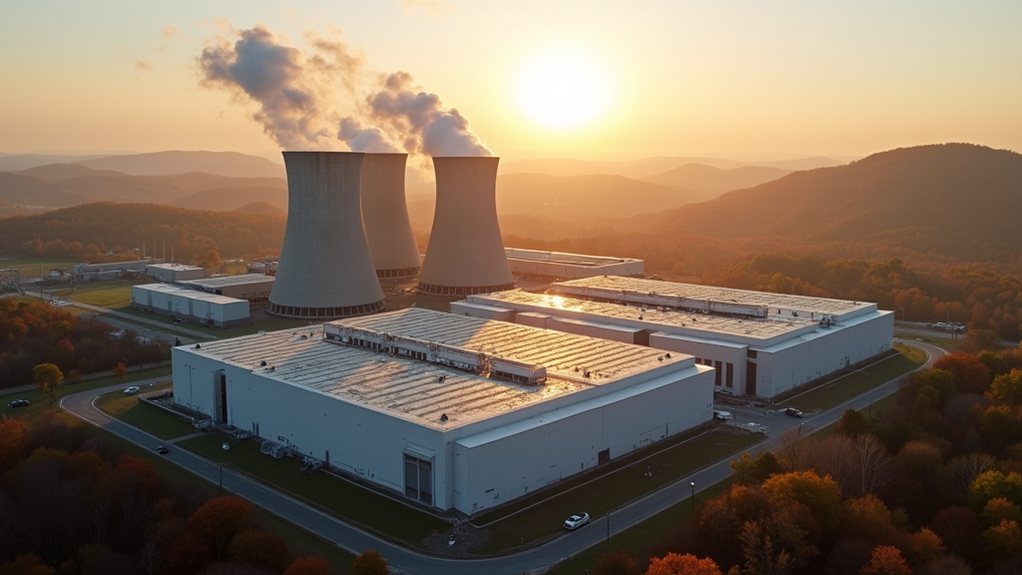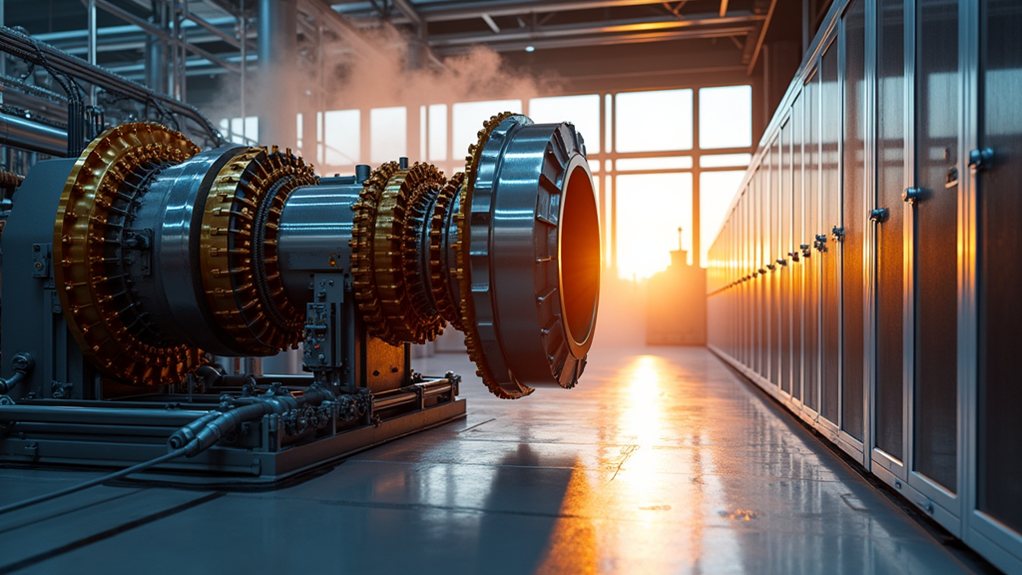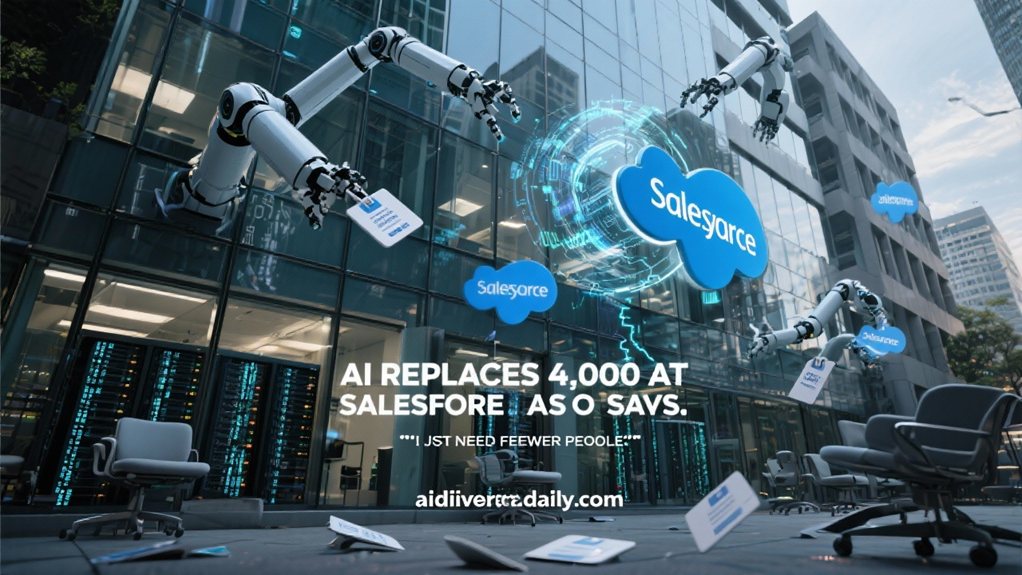As California’s last nuclear power plant embraces artificial intelligence, lawmakers and experts are sounding alarms about potential risks. Diablo Canyon, which generates nearly 9% of the state’s electricity and 17% of its zero-carbon energy, recently became the first U.S. nuclear plant to implement AI technology. The system, called Neutron Enterprise from Atomic Canyon, runs on powerful NVIDIA H100 graphics processors. Sounds fancy, right?
The AI tool isn’t controlling nuclear reactions—yet. It’s currently focused on document management, using optical character recognition and advanced search capabilities to sift through massive datasets. No cloud access here; everything stays onsite. The tech promises to slash search times and boost compliance efficiency. Critical thinking skills remain essential for human operators to maintain oversight of AI systems. But critics aren’t exactly throwing a parade.
While AI promises faster document searches at Diablo Canyon, it’s not controlling nuclear reactions—yet. Critics remain wary.
Democratic Assemblymember Dawn Addis has raised concerns about oversight and safety. The Nuclear Regulatory Commission is scrambling to address AI-related gaps, with fewer than 100 regulatory issues identified but no practical standards in place. Atomic Canyon voluntarily keeps the NRC informed. How reassuring.
Diablo Canyon isn’t cheap to operate, costing about $91 per megawatt-hour. Safety requirements after Fukushima made things even pricier. AI could help cut costs. The implementation is estimated to save workers about 15,000 hours annually previously spent searching through technical documents. But at what expense?
The plant’s safety committee views the AI implementation positively while maintaining vigilance. The real worry isn’t today’s limited applications—it’s tomorrow’s expansion. This cutting-edge solution was developed in collaboration with Oak Ridge National Laboratory under Department of Energy guidance. What happens when AI moves beyond paperwork to actual decision-making? Critics fear job losses and unforeseen risks in this high-stakes environment.
The plant is scheduled to begin decommissioning in 2029, but its AI experiment has broader implications. Without clear guardrails, the nuclear industry’s AI adoption could outpace regulatory frameworks. Nobody wants a computer glitch near nuclear material. Period.
For now, Neutron Enterprise remains focused on administrative tasks. But the push for efficiency in nuclear operations inevitably raises questions about where the technology stops—and who’s watching to make sure it does.
